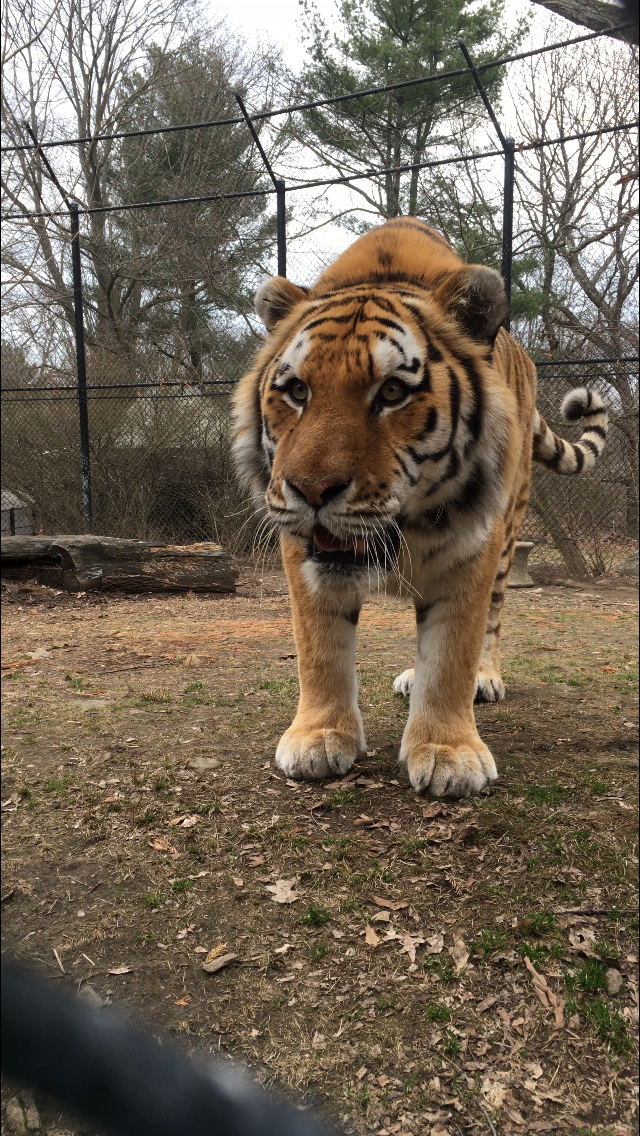
BRIDGEPORT, Conn. – Connecticut’s Beardsley Zoo will say goodbye this weekend to its male Amur Tiger, Petya, as he moves to a new permanent home. Born on August 8, 2006, Petya arrived at Connecticut’s Beardsley Zoo on January 10th, 2015, from the Indianapolis Zoo.
Amur tigers are very rare, and are critically endangered in the wild. According to the Association of Zoos and Aquariums’ (AZA) statistics, today Amur tigers are thought to occupy less than seven percent of their original range. Threatened by habitat loss and degradation, poaching, tiger-human conflict, and loss of prey, four of nine subspecies have disappeared from the wild just in the past hundred years. The future of the Amur tiger has been a major concern of the world’s zoos for many years.
Managed by the AZA’s Species Survival Plan (SSP), inter-regional transfers like Petya’s are arranged with careful attention to gene diversity in the hope that successful breeding will take place. As an example, the Zoo’s female tiger, Chang, arrived in April, 2017, as an excellent genetic match to Petya, and their pairing resulted in the birth of two cubs in November, 2017. Petya’s transfer was decided after a careful study of the genetics of the female tiger at his new home.
There is an SSP program in place for many species of animals through oversight by a group called the Taxon Advisory Group (TAG). The Felid (or Cat Family) Taxon Advisory Group makes breeding recommendations for big cats in zoos across the country, based on genetics, age and health of animals, and need for more of the species to protect future populations.
Connecticut’s Beardsley Zoo’s Deputy Director, Don Goff, is the Chair of the National Felid TAG group. He leads a committee of AZA-accredited zoo members whose goal is to save declining species through carefully researched breeding recommendations.
“As sad as we are to say goodbye to Petya, the planned transfer of animals to other member zoos ensures the sustainability of a healthy, genetically diverse, and demographically varied AZA population,” explained Goff.
“Wildlife conservation is one of our most pressing environmental concerns,” he added. “Our breeding program supports the Amur tigers’ continued existence.”
Connecticut’s Beardsley Zoo has had repeated success in breeding endangered species, a testament to the Zoo’s animal care specialists and the highest quality of animal care. The Zoo has been the birthplace of multiple endangered species, including tiger cubs, Maned wolf pups, Mexican wolf pups, and two baby Giant anteaters.
About Amur tigers
The Amur, once called the Siberian tiger, is a rare subspecies of tiger, and the largest cat in the world. Adult male tigers can weigh up to 675 pounds, with females weighing up to 350 pounds. Similar to people’s fingerprints, no two tigers have the same striped pattern. Amur tigers differ from other tigers with fewer, paler stripes, and a mane that helps to keep them warm. They live in southeast Russia as well as small areas of China and North Korea. They live for 10-15 years in the wild, and up to 22 years in human care.
Connecticut's Beardsley Zoo is closer than you think and open daily from 9:00 am to 4:00 pm.
For more information, visit beardsleyzoo.org.
Photo Credit: Connecticut's Beardsley Zoo